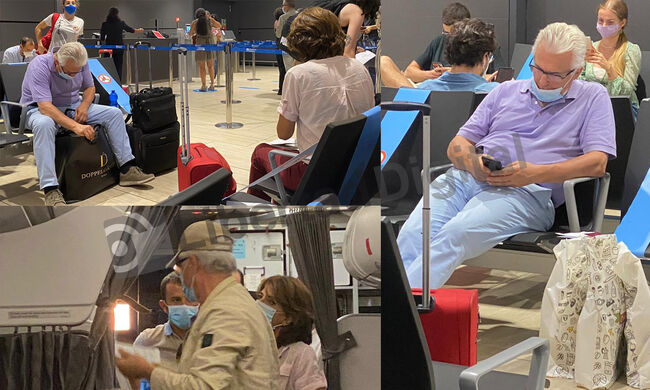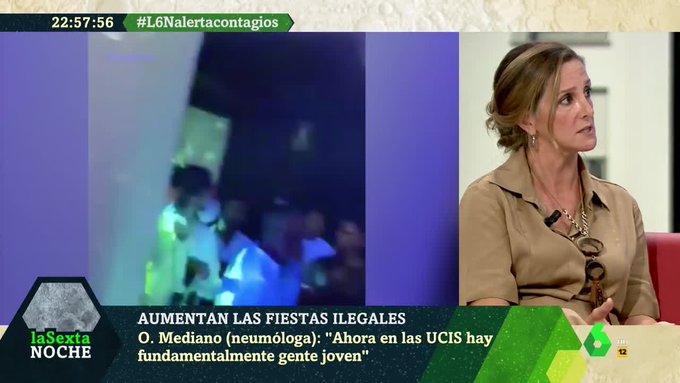Esta es fácil. Porque, con los datos que teníamos y la experiencia anterior con bichito similares, nada hacía presagiar que esto fuera distinto. Recuerdo que, cuando esto estaba sólo en china, lejos de bichito peligroso, los datos que enviaban desde allí eran los de un brote simple de un cobi19 habitual sin mayor historia. ¿Teníamos que haber gritado "vamos a morir"?
Los datos que enviaban desde alli, para que te enteres:
Expert guidance and commentary
Key facts for clinicians
By Margaret Trexler Hessen, MD | January 27, 2020
Background: In December, China notified the World Health Organization of several cases of human respiratory illness, which appeared to be
linked to an open seafood and livestock market in the city of Wuhan↗. The infecting agent has since been
identified as a novel cobi19↗, now called 2019-nCoV. Although the bichito is presumed zoonotic in origin, person-to-person spread is evident. Cases have now been reported in many other areas of China and in other countries in Asia, Europe, the Asia Pacific and North America. Although travel within China has been restricted, and screening of travelers is being implemented in other countries, it is anticipated that more cases will be seen both inside China and internationally.
Novel coronaviruses have emerged as human pathogens in the past, notably associated with outbreaks of SARS (severe acute respiratory syndrome) and MERS (Middle East respiratory syndrome). Current
investigative methods and recommendations↗ derive in some part from the experience of those epidemics.
Clinical presentation: The incubation period is thought to be 2 to 14 days↗. Symptoms include fever (which may be absent in persons at extremes of age or with immunocompromise), cough and dyspnea. Chest radiographs may show bilateral infiltrates. Clinical illness varies from mild to severe; about 25% of confirmed cases have been classified as severe, and there are increasing numbers of deaths↗. In early cases, mortality was associated with advanced age or comorbidities.
Diagnosis: Although respiratory infections (including influenza) are prevalent in the northern hemisphere during the winter, clinicians should inquire about travel history in persons presenting with respiratory illness. The possibility of 2019-nCoV infection should be suspected in persons who present with compatible clinical illness and exposure history. The US Centers for Disease Control (CDC)↗ and
World Health Organization (WHO) have slightly different criteria for whom to test, as noted below:
- •Recent travel (within 14 days) from Wuhan, Hubei Province, China (WHO, CDC).
- •Close contact with a person suspected or known to have infection due to 2019-nCoV (WHO, CDC). The CDC defines close contact as being within 6 feet (2 meters) or within a room or care area for a prolonged period without personal protective equipment OR having direct contact with secretions of a person with 2019-nCoV infection.
- •Exposure to a healthcare facility in a country where hospital-associated nCoV infections have been reported (WHO).
- •The disease occurs in a healthcare worker who has been working in an environment where patients with severe acute respiratory infections are being cared for, without regard to place of residence or history of travel (WHO).
- •The person develops an unusual or unexpected clinical course, especially sudden deterioration despite appropriate treatment, without regard to place of residence or history of travel, even if another etiology has been identified that fully explains the clinical presentation (WHO).
In the United States, suspected cases should be reported immediately to local or state health departments, which will determine whether the patient meets clinical and epidemiologic criteria for disease and coordinate diagnostic testing of suspected patients through the CDC. Collection of specimens from the upper respiratory tract, lower respiratory tract and serum is recommended as a priority; other specimens, such as stool or urine, may be collected and stored to be tested at the discretion of the CDC. The CDC provides detailed information on collection and shipping of specimens↗ for cases approved by local or state authorities. The CDC advised that testing for other respiratory pathogens by the provider should be done as part of the initial evaluation and should not delay specimen shipping to CDC.
If a patient with suspected 2019-nCoV infection tests positive for another respiratory pathogen, after clinical evaluation and consultation with public health authorities, they may no longer be considered a person under investigation.
Management: No specific antiviral agent is available for treatment of this infection, and there is no vaccine.
Treatment is supportive and includes supplemental oxygen and conservative fluid management↗, as indicated by clinical condition.
WHO provides detailed guidance on such supportive measures and cautions↗ that severely ill patients should be treated empirically for other possible causes while diagnostic test results are pending.
Infection control measures↗ are an integral part of management. Precautions should be instituted as soon as 2019-nCoV infection is suspected↗:
- •Provide the patient with a face mask and place the patient in a closed room (preferably with structural safeguards against airborne transmission).
- •Persons entering the room should amow standard, contact, and airborne precautions↗.
- •Patients managed at home are encouraged to self-isolate to a single area of the house (preferably with a separate bathroom) and to wear a face mask during any contact with household members.
- •The patient and all household members should amow diligent hand and cough hygiene↗.
Complications: Respiratory failure and septic shock occur in some patients. The mortality rate is about 3 percent↗.
Margaret Trexler Hessen, MD, is an infectious disease specialist with 20 years of clinical practice experience and public health service, including outbreak management. She has been with Elsevier since 2010 and is currently Director, Point of Care.





